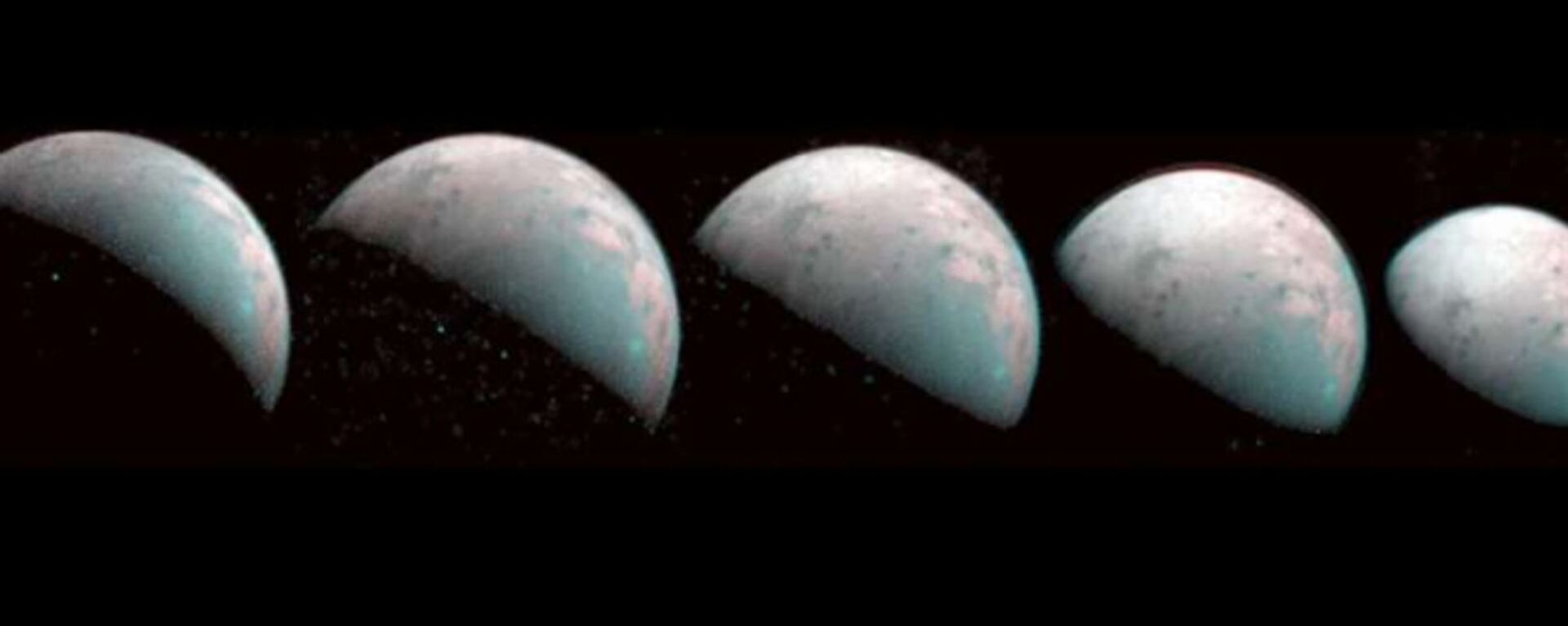‘Unlike Anything on Earth Today’: Possible Proof of ‘Alien’ Life Found on Mars By Curiosity Rover
11:49 GMT 19.01.2022 (Updated: 17:02 GMT 12.04.2023)

© NASA . JPL-Caltech
Subscribe
The National Aeronautics and Space Administration’s Curiosity rover, which landed on Mars in August 2012 and has been collecting rock and soil samples, was joined by the Mars Perseverance rover in 2021, with NASA hoping samples will now be eventually brought back to Earth for further study.
At least, this one of the scenarios suggested by experts from Pennsylvania State University, the NASA Jet Propulsion Laboratory and the California Institute of Technology (CalTech), to explain the carbon signatures discovered in sediment in the Gale crater and collected over the span of nine years, from August 2012 to July 2021.
After individual chemicals in the 24 powder samples were separated by Curiosity via heating in the absence of oxygen, the mix of carbon 12 and carbon 13 isotopes displayed a surprisingly wide variation, suggesting that “unconventional” processes had been at work.

NASA scientists say these rocks in Gale Crater indicate a stream once flowed in this part of Mars.
© NASA/JPL/Caltech/MSSS
In other words, the fact that some samples were enriched with carbon 13, while others were extremely depleted, indicated that they were formed by a method different to the carbon cycle in Earth's modern era.
The two stable carbon isotopes - carbon 12 and carbon 13 – called thus as they do not decay into other forms or elements over time, can reveal how the carbon cycle may have changed.
"The amounts of carbon 12 and carbon 13 in our Solar System are the amounts that existed at the formation of the Solar System… Both exist in everything, but because carbon 12 reacts more quickly than carbon 13, looking at the relative amounts of each in samples can reveal the carbon cycle," said geoscientist Christopher House from Pennsylvania State University, one of the authors of the study.
Three ‘Plausible’ Scenarios
One plausible scenario suggested by scientists is that the unusual carbon signatures could be the result of a giant molecular cloud (GMC) - an assemblage of molecular gas that has more than 10 thousand times the mass of the Sun. The GMCs are believed to affect the biospheres of planets as their host star passes through them.
The Solar System passes through these clouds every several hundred million years or so, with the subsequent cooling effect leaving carbon deposits in its wake.
The galactic dust cloud would have first lowered the temperature on a Mars that still contained water and created glaciers. Afterwards, dust would have deposited on top of the ice, leaving behind a layer that included the carbon once the glacier melted. This explanation is plausible, but it requires additional research.
However, this scenario needs more investigation, emphasised the team of researchers.
A second option is that Curiosity’s discovery could be explained by ultraviolet conversion of carbon dioxide (CO2) to organic compounds like formaldehyde. The theory likewise needs further study.
That leaves the third explanation - carbon created as a result of life. In other words, ultraviolet degradation of biologically produced methane.
On our planet Earth, a strongly carbon-13 depleted signature, found in a paleosurface, would be an indication that microbes had consumed microbially-produced methane. This theory is buoyed, to a degree, by some existing parallels on Earth, claim scientists.
"The samples extremely depleted in carbon 13 are a little like samples from Australia taken from sediment that was 2.7 billion years old. Those samples were caused by biological activity when methane was consumed by ancient microbial mats, but we can't necessarily say that on Mars because it's a planet that may have formed out of different materials and processes than Earth," said House.
As Curiosity's mission carries on, further drilling is planned in about a month’s time in the area where many of the samples were collected.
My first drill hole on Mars! Collecting and storing rock samples is a big and complex task, and this is a huge step. Next step: processing. #SamplingMarshttps://t.co/Ex1QDo3eC2 pic.twitter.com/JvrZcZ1NPm
— NASA's Perseverance Mars Rover (@NASAPersevere) August 6, 2021
Furthermore, Curiosity was recently joined by the Perseverance rover, which is planning to return Martian rocks to Earth for further analysis – something that Curiosity has been doing in situ.
"All three possibilities point to an unusual carbon cycle unlike anything on Earth today. But we need more data to figure out which of these is the correct explanation. We are being cautious with our interpretation, which is the best course when studying another world," says House.

